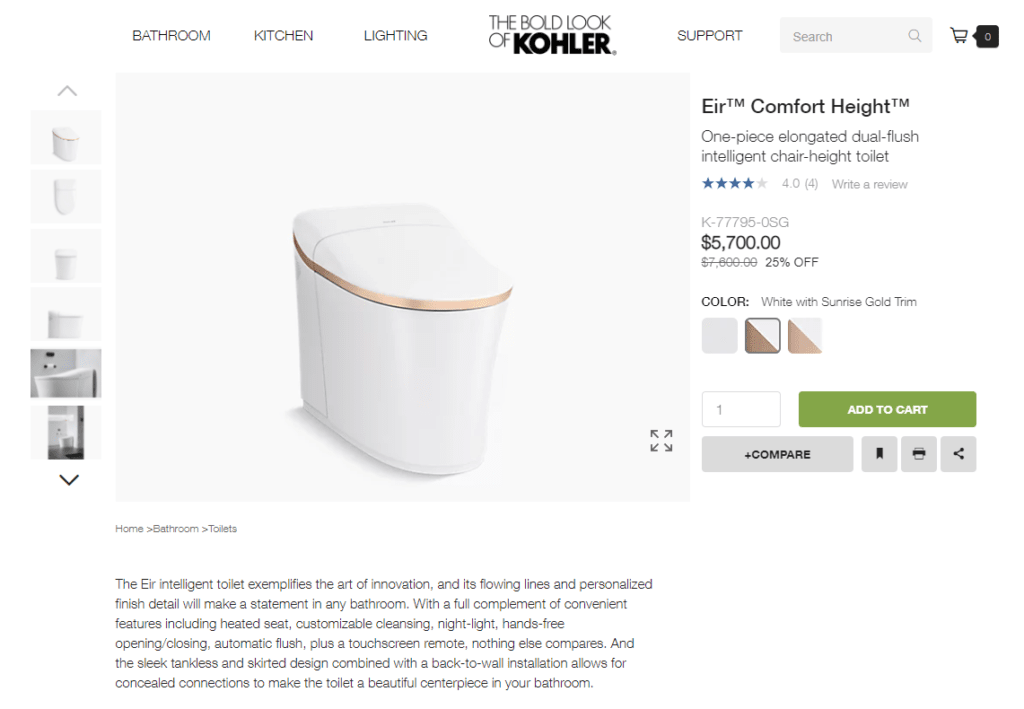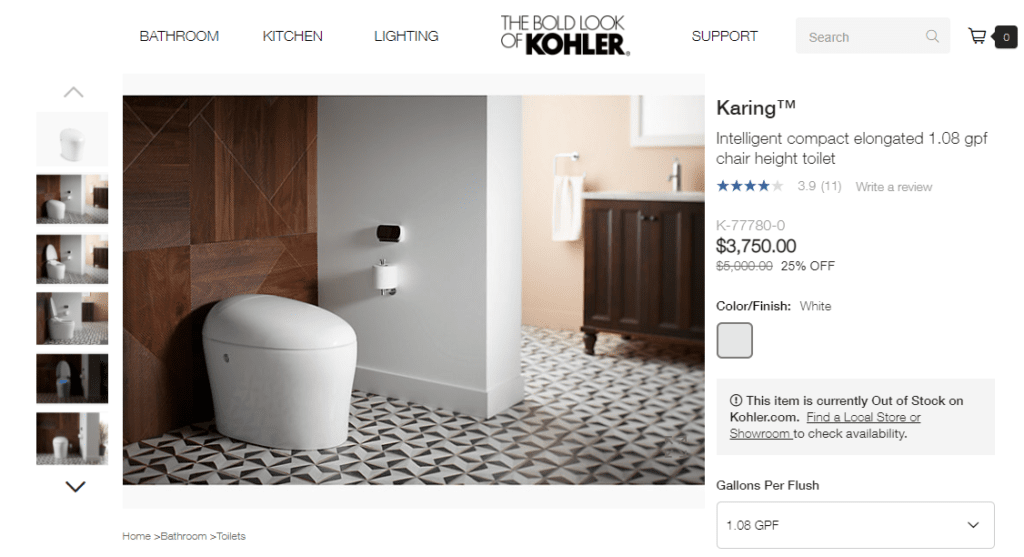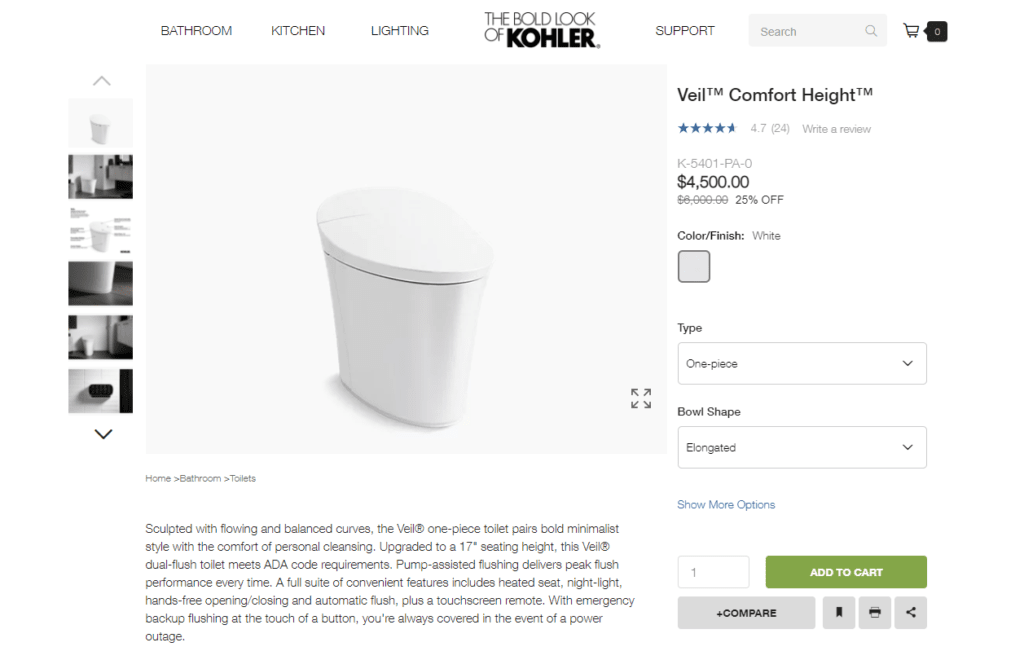Remodeling a bathroom is a great way to add function and beauty to your home. Bathrooms are some of the most used rooms in a home, so comfort, appeal and functionality are important. Smart toilets are a great way to add all of these to your next bathroom remodeling project.
What Is A Smart Toilet?

A smart toilet is a toilet that uses built-in technology, capable of interacting and connecting with the user. Smart toilets have a sleek design, use less water than standard toilets and some even have added health benefits. They can be controlled with voice command, mobile apps or remote controls. In 2011, Kohler released the Numi, which was hailed as the world’s first smart toilet. Since then, many companies have entered into the smart toilet industry, each developing smart toilets with their own unique features.
Smart Toilets: Features
Modern smart toilets come with a plethora of features. Most basic models come with a bidet, an automatic lid and an automatic flush. If you opt for a higher-end smart toilet in your bathroom remodel, they can come with some, or all of the following features:
Some models offer even more features than the ones listed above, which can increase the functionality of your toilet even further.

Smart Toilets: Pros
- Save Space: Smart toilets are often smaller than standard toilets. Additionally, the water tank and buttons can be placed on, or within the wall. This saves space and can be especially useful in a smaller bathroom.
- Hygienic: The majority of toilets are hands free, which means they are more hygienic when compared to a standard toilet. As mentioned before, some models even clean themselves.
- Low Water Usage: Smart toilets average around .6 gallons per flush (GPF), whereas a standard toilet averages around 1.6 GPF. Many smart toilets use the exact amount of water needed for each flush, reducing your water consumption.
- Health Benefits: Many toilet manufacturers want to use the smart toilet technology to monitor the users health. By fitting toilets with technology that can detect a range of warning signs in our waste, they can inform the user to seek medical attention if needed.
- Quieter: With an automatic lid, as well as exact water usage, smart toilets are quieter than standard toilets. A quieter toilet is less intrusive for the user and for others in the home.
Smart Toilets: Cons
- Electricity Usage: Smart toilets are powered by electricity. Therefore, a smart toilet will consume more energy than a standard toilet, which may increase your electricity bill.
- Repairs: Like any other appliance, smart toilets will require repairs and maintenance. Because smart toilets are relatively new, there are fewer people who know how to repair a smart toilet. With fewer people in the smart toilet repair market, the repairs could more costly when compared to typical toilet.
- Cost: Typical toilets can be had for $350 or less. Most smart toilet models typically cost above $2,000. However, if it’s within your budget, a smart toilet can be a great investment.
Is a Smart Toilet Right for You?
While still a relatively new technology, smart toilets are starting to make their way more and more into our bathroom remodeling projects. Please contact us at LaBonte Construction if you would like to incorporate a smart toilet into your next bathroom remodel.



